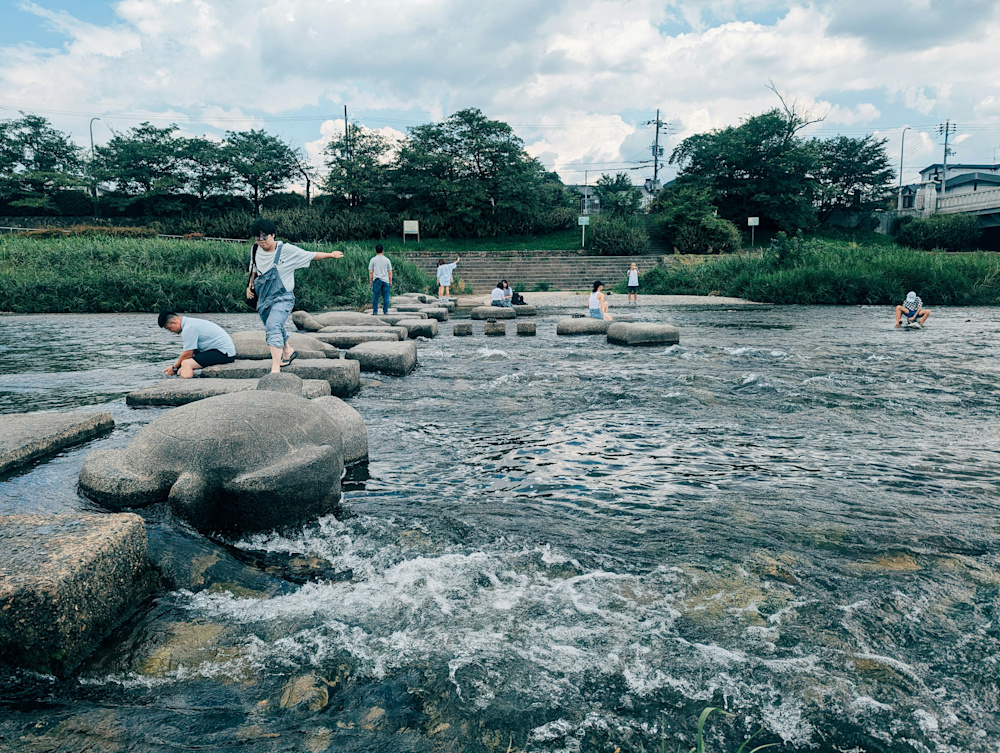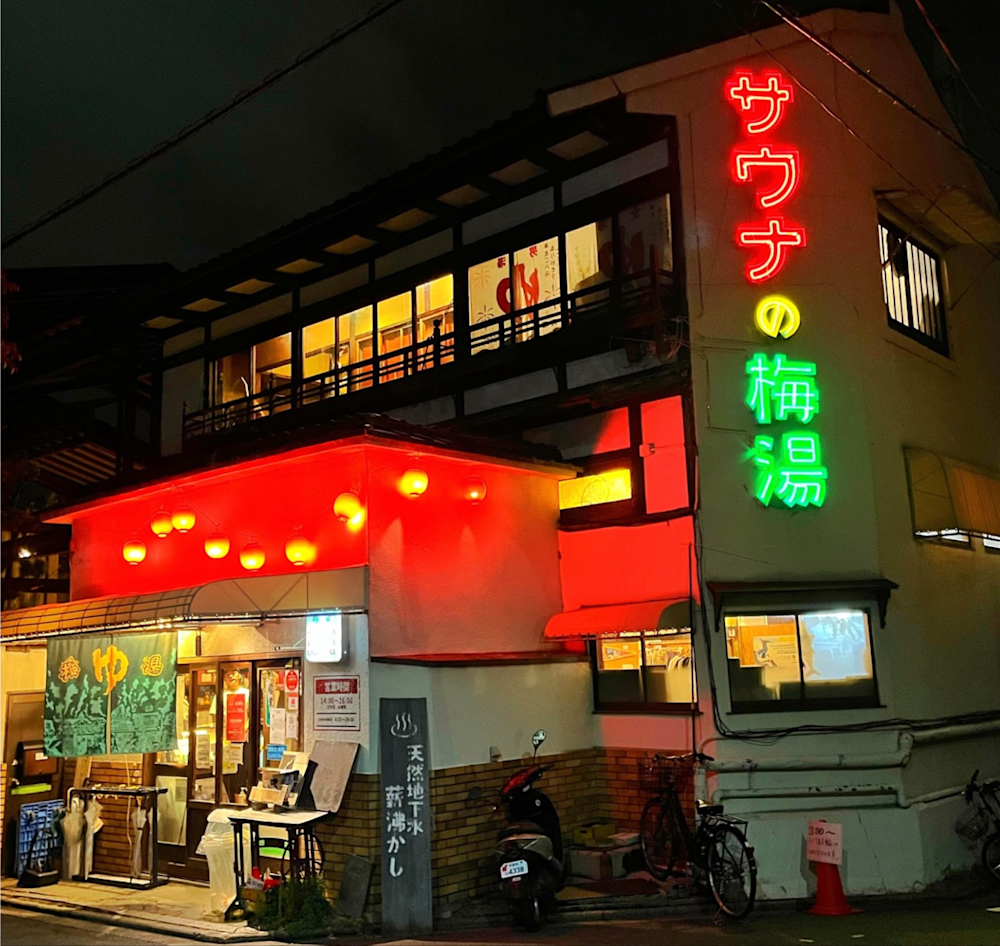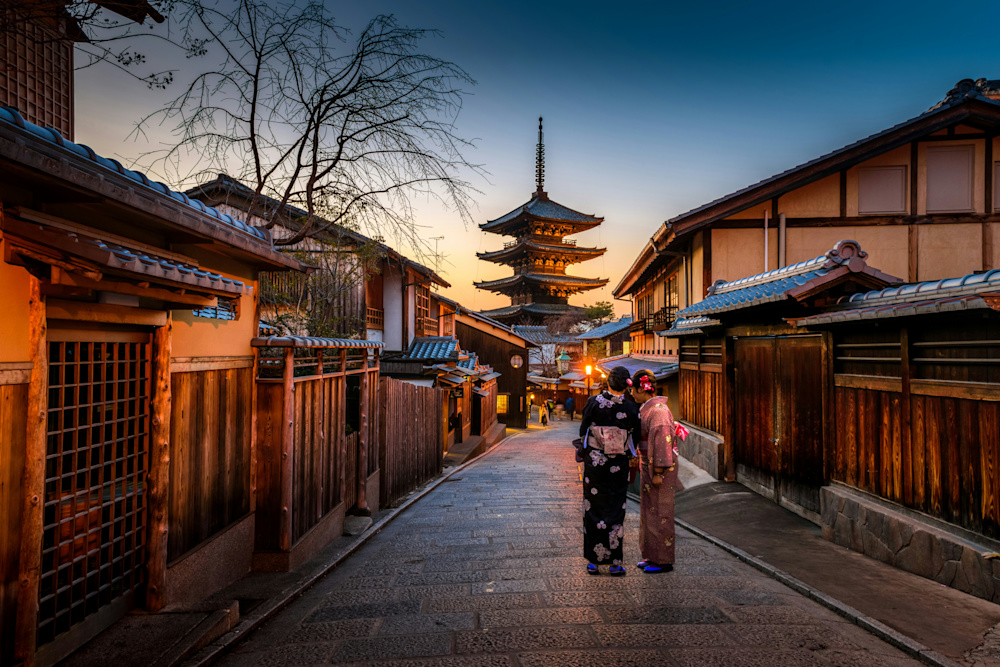Updated February 12, 2025
Working Remotely From Kyoto: What’s It Like?
Ever dreamed about moving across the country to start a new life?
If you’re a tech worker living in a post-pandemic world, you might have thought about this before.
I personally had this dream for years. Before 2020, I was just your average company employee living in Tokyo. I rode crowded trains to the office every morning, went out for lunch every afternoon, and went home to a tiny apartment every evening.
It wasn’t a bad routine at all, but part of me always wished I could move to a smaller town and enjoy a more laid-back life.
Luckily for me, this dream became a reality when my company switched to a fully remote workstyle. Without hesitation, I sold all of my stuff, packed my bags, and bought a one-way ticket to Kyoto.
Moving across the country was a fantastic decision that changed my life and opened doors to new experiences. At the same time though, it came with a lot of challenges and compromises. I’ll share everything that I experienced so you can decide if a cross country move is right for you.
In this article: 📝
Why Kyoto?
During my university days, I studied abroad in Kyoto for a semester and absolutely loved it. It was beautiful, charming, and comfortable despite being a major city.
After finishing university I decided to work in Japan. My first job had me living in a very small and quiet countryside town. A few years later, I changed jobs and moved to ultra-urban Tokyo.
Having experienced these two completely different lifestyles, I felt that Kyoto had the best of both worlds. It had all the convenient aspects of a big city, while also being peaceful and laid-back.
I decided that Kyoto was the city where I could live my ideal life.

The Pros
As you can imagine, moving away from the mega metropolis of Tokyo came with lots of perks.
More Space and Lower Living Costs
It’s no secret that Tokyo is the most expensive city in Japan. Renting a modern studio apartment located in the 23 wards can set you back anywhere between 80,000 yen to 100,000 yen per month. That’s far higher than the nationwide average which ranges from 50,000 yen to 70,000 yen.
Luckily for Kyoto residents, rent in the ancient capital falls right within that nationwide average. Studio apartments in most parts of the city generally go for around 50,000 yen per month. Meanwhile, those in highly desirable areas like the fancy Karasuma Oike district can climb up to the 70,000 yen range.
Personally, when I moved to Kyoto I was feeling a bit adventurous and opted not to go with an ordinary apartment. I instead rented a detached house that came with a living room, 2 bedrooms, and an attic, all for just 85,000 yen per month. I was able to convert one of the bedrooms into a home office and set up a comfortable workspace.
Remote workers living in dense cities can find it hard to physically separate their work and leisure spaces at home. Sometimes the only choice is to spend the entire working day in the same room that you relax and sleep in–a foolproof recipe for cabin fever.
Thankfully, this wasn’t a problem for me in Kyoto. My living costs dropped and I had the opportunity to live in a larger home.
By setting up a home office, I was able to separate my workspace and eliminate distractions. I also set up a nice desk, chair, and monitor without having to worry about space constraints. This was quite an upgrade from my Tokyo days when my only choice was to desperately cram a tiny desk in the corner of my room.
Having such a comfortable living arrangement would have been unthinkable for me in Tokyo, but in Kyoto it was perfectly realistic.
A Laid-Back Lifestyle
Kyoto understandably has a reputation for being overcrowded with tourists. But the truth is that it’s surprisingly peaceful outside of specific areas.
Visiting famous attractions like Arashiyama, Kiyomizu-dera, and Fushimi Inari? If so, you’ll definitely notice the huge number of tourists. If you're not prepared, you might be shocked and wonder how anyone could live in such a crowded city!
However, it’s easy to forget that the huge majority of Kyoto residents don’t actually live near these areas, and rarely even bother to visit them. Just like how most New Yorkers don’t spend their daily lives in Times Square, and most Parisians don’t visit the Eiffel Tower every day... Most Kyoto residents don’t venture to the crowded tourist areas on a regular basis.
Outside of those places, the city is quiet and offers plenty of breathing room. Public transportation is way less crowded than Tokyo’s infamously congested trains. Shops, cafes, and restaurants feel more spacious.
On top of that, the city is flat, compact, and easy to navigate thanks to being built on a grid layout. This makes it a dream for cyclists, who usually find that they can easily reach their destinations on two wheels. For many Kyoto residents including myself, cycling is a practical and enjoyable form of transportation.
And thanks to the lower population density and slower pace of life, I’ve personally found people in Kyoto to be friendlier and more easy-going. The average person isn’t constantly in a rush, and is much more likely to stop for a chat. Everything feels a bit warmer and more human here.
So Many Things to Do!
Although smaller and less crowded than Tokyo, Kyoto is still a major city and has a lot to do beyond temples and shrines.
Kyoto is home to countless world-class restaurants, including eateries run by people from all over the globe. Whether it’s Mexican, Korean, Vietnamese, or Thai food that you crave, you’re likely to find it here.
If you think Kyoto is all about green tea and traditional Japanese food, here’s a fun fact. Kyoto actually has the highest consumption of coffee and bread in Japan. Local coffee shops and delicious bakeries can be found in every corner of the city. If you love visiting cafes and enjoying freshly baked bread and pastries, this is a city where you’ll never run out of options.
Kyoto also has a very high concentration of public bathhouses (sentō). If you live here, there’s a very good chance that you can find one in your neighborhood. These charming facilities are amazing places to relax while enjoying Japan’s unique bathhouse culture.
The city also has no shortage of nature and places to unwind. My personal favorite is Kamogawa, a river that runs through the entire city and offers endless space for residents to do anything they want. Take a stroll on the river bank and you’ll see people jogging, cycling, picnicking, playing sports, practicing musical instruments, walking their dogs, reading books, or taking long naps.
And of course, if you want to venture a bit further out, the rest of the Kansai region is right at your doorstep. Osaka, Kobe, Nara, and Shiga are just a train ride away and offer countless opportunities to explore.

All the Benefits of Remote Work
Freedom. Comfort. More time with family. Working in your pajamas.
And the biggest perk of all? No commute!
Commuters living in the Greater Tokyo Area spend a one way average of 1 hour traveling to work. By eliminating that commute, you free up 2 hours each day. How would you spend that extra time?
I took the opportunity to pick up new skills and hobbies that I had always wanted to try. I started attending language classes, taking music lessons, and exercising more. Having the extra time and energy really made a difference.
Whenever I feel like I’m spending too much time working at home, I drop by a cafe or coworking space. Having the freedom to change up my environment does wonders for my mood and productivity.
And thanks to the flexibility of remote work, I can easily schedule things like errands and doctor visits into my day.
No one can deny that remote work comes with a ton of perks, and I too enjoyed them to the fullest.
The Cons
Moving across the country and working remotely sounds too good to be true, doesn’t it?
Well, it’s time to talk about the less glamorous side of this lifestyle.
Remote Work Isn’t Easy
Working from home brought all the perks mentioned above, but came with just as many challenges.
The biggest difficulty was communication, a vital aspect of any job. This was almost never a problem when I worked from the office. If I needed to talk to someone I could simply walk over to their desk or chat with them in an open space.
As you can imagine, this is much harder to do in a remote setting.
Sure, I can message my teammates on Slack or invite them to a call, but there’s a surprising amount of friction involved in this process. Responses can be slow, and scheduling calls every single time I want to talk is quite a hassle.
Online meetings are a staple of every remote job and are easy now thanks to apps like Zoom and Google Meet. However, there’s no denying that online meetings can often be painfully unengaging. They deliver only a fraction of the energy and human connection that in-person meetings have. Lots of remote workers including myself experience Zoom fatigue on a regular basis.
Similarly, I found that collaborative tasks like pair programming are harder to do online. Pair programming is an activity that I found fun and engaging when done in person, but absolutely exhausting when done remotely.
Another challenge I faced was being unable to mentally disconnect from work. I thought that having no commute would be heavenly, but it turned out to be a double-edged sword.
With no time spent traveling home after work, there was nothing helping my brain switch from work mode to relaxation mode. After finishing work for the day, I would go to my living room to unwind, but my brain would still be stuck in ON mode, with no way to turn it off. Even though I enjoyed my job, constantly thinking about work while trying to relax was not an ideal way to spend my free time.
It turns out that back in the day, commuting to the office really helped me establish mental boundaries between work and free time. These boundaries became blurry when I committed to full-time work from home.

Feelings of Isolation and Lack of a Community
One of the keys to living a healthy life is being part of a community. And for most modern adults, their main community outside of family is their workplace.
I was no exception. When I lived in Tokyo, going to the office every day and interacting with my coworkers was an important routine that kept me happy and healthy. The office was a place where I felt like I belonged.
Sure, there were days when I didn’t want to go. As an introvert, spending long periods of time surrounded by other people could be pretty draining. But in spite of this, I do believe that having the obligation to go to the office every day had a positive effect on my health overall.
When I moved across the country, this daily routine vanished into thin air.
Suddenly, it became normal to spend entire days alone. Although I enjoyed the peace and quiet at first, I quickly realized that too much time alone was just as detrimental to my mood as too little time alone.
And now that I was living 500 kilometers away from Tokyo, I was isolated from my community. By choosing to move away and experience a new life, I had also separated myself from the people who I used to see every day. It didn’t help that I often saw coworkers sharing pictures of company parties and activities, which I couldn't join because I was too far away.
I realized that I had to make active efforts to meet people in Kyoto and find a sense of belonging here.
Thankfully, I did eventually manage to make new friends and build a healthy social life. It took time and active effort to establish a routine here, but it was well worth it.
Fewer Opportunities for Work and Socializing
Whether you like it or not, Tokyo is the undisputed tech capital of Japan, and home to the overwhelming majority of jobs in the country.
Japan has plenty of companies offering excellent working conditions, competitive salaries, and opportunities for foreigners. But as you might have guessed, most of these companies are based in Tokyo.
When I left for Kyoto, I knew that my options would be limited if I decided to change jobs later on. My best choices would be to find another fully remote job or find a job based in Kansai. Although less abundant, these opportunities do exist and would allow me to continue with my career while living in my favorite city.
Similarly, making friends and connections as a foreigner is easier in Tokyo. There’s no shortage of communities and events for English speakers. The tech scene in the capital is booming and meetups take place on a regular basis.
Kansai does have its own tech communities too. The scene is a bit less active than its Tokyo counterpart, and some communities operate entirely in Japanese. But either way, tech workers in Kansai do have opportunities to make friends and network if they look for it.
Foreigners in Tokyo know that the international community is huge, and one can easily get by without speaking Japanese. But outside of the capital, you’re unlikely to have this luxury and will want to learn Japanese to maintain a healthy social life.
English speaking communities in Kyoto certainly exist but are much smaller and fewer in number. Friendships can be transient, as most foreigners here are international students or researchers with plans to eventually move away. Learning Japanese and befriending the locals is your best bet for making long-term friendships.
I personally found that for the reasons above, Kyoto was an amazing opportunity to immerse myself in Japanese. If you're committed to learning the language, this can be a huge positive.

Conclusion: Is Kyoto Life Worth It?
My answer is a resounding yes!
Moving to Kyoto was an adventure. It was one of the most exciting times of my adult life, and even after the excitement wore off, I was confident that I made the right decision.
It did come with unexpected challenges and sacrifices, and it's not the right choice for everyone. If you’re considering a similar move, take some time to think about whether it's a good fit for your career goals and lifestyle. Consider whether or not you're willing to deal with the challenges of remote work.
But at the end of the day, go with your gut feeling. If you have a deep desire to move and start a new life, I think it's worth it!
Remember that nothing is permanent. Even if you move to a new city and decide later on that it wasn't the right choice, you can always move back. Living in a completely different part of Japan, even temporarily, is a wonderful experience.
And remember that there are still plenty of career opportunities no matter which part of Japan you live in!
Get Job Alerts
Sign up for our newsletter to get hand-picked tech jobs in Japan – straight to your inbox.







